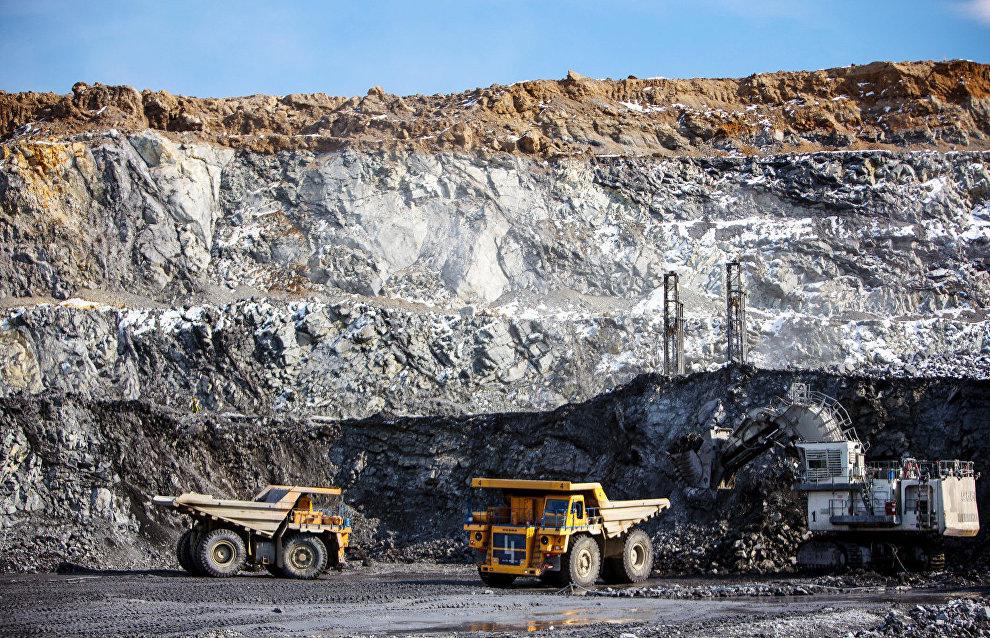To get detailed information about reserves, extraction, processing and export of antimony Asia-Plus has applied to the Ministry Industry and New Technologies (MoINT), the Main Geology Directorate and the Agency for Statistics.
The Agency for Statistics has advised to apply to relevant sectoral agencies “in order to get specific and detailed information.”
The sectoral agencies didn't answer for a month. Only on February 1, while giving a news conference on the results of the past year’s work, Ilhomjon Oimuhammadzoda, the head of the Main Geology Directorate under the Government of Tajikistan, noted that there are eleven antimony deposits in Tajikistan and nine of them are located in Zarafshon and Hisor valleys.
However, he did not answer the question of what volumes of antimony reserves Tajikistan has.
The biggest antimony reserves are reportedly concentrated at Jizhikrut and Konchok deposits in Ayni district, Sughd province. Ores of these deposits reportedly contain more than 15 percent of this semi-metal. Based on these stocks, the Anzob ore refinery has operated since the late 1940s.
According to data from a MoINT, Anzob Limited Liability Company (LLC) is now engaged in extracting antimony in Ayni district.
This company was established as the Tajikistan-U.S. joint venture in 2005. Tajikistan owned 51 percent of the shares and the United States’ Comsup Commodities Inc. assumed the 49% ownership interest in this enterprise. In September 2006, Comsup Commodities Inc. repurchased Tajikistan’s share in the company, becoming the only owner of “Anzob” LLC.
The company later built a plant on processing ores and producing a mercury-antimony concentrate there.
According to proven reserves of antimony Tajikistan ranks third globally (following China and Thailand) in Asia and the first among the CIS member nations.
Concentrates of mercury-antimony ores of Tajikistan are processed in other countries. They were processed in Kyrgyzstan one time, but after unilateral closure of border by Kyrgyzstan in late April 2021, Tajikistan’s concentrates of mercury-antimony ores have been processed in China.
It is to be noted that according to some sources, Tajikistan’s antimony deposits are stated to be the largest in the Commonwealth of Independent States (CIS) region.
An article by Bryant Harris, published in DefenseNews on June 8 last year, in particular, notes that antimony is now on the front lines of recent congressional efforts to shore up the strategic reserve of rare earth minerals, known as the national defense stockpile. Antimony is reportedly a critical mineral that is vital to producing ammunition.
The article notes that the House Armed Services Committee “took its first stab at addressing China’s grip on the antimony supply chain in draft legislation” it released on June 8.
A report accompanying the bill reportedly notes that the committee is concerned over recent geopolitical dynamics with Russia and China and how that could accelerate supply chain disruptions, particularly with antimony.
China is the largest producer of mined and refined antimony and a major source of imports for the United States, the report says, noting that China is “losing market share with Russia, the world’s second-ranked producer,” with Tajikistan gaining ground in the global market as the world’s third-largest supplier of antimony.
The U.S. Defense Department reportedly submitted its own legislative proposal to Congress in May last year, asking lawmakers to authorize US$253.5 million in the defense authorization bill to procure additional minerals for the stockpile.
A lead-antimony alloy is also used in batteries. Other uses of antimony alloys include type metal (in printing presses) and cable sheathing. Antimony compounds are also used to make flame-retardant materials, paints, enamels, glass and pottery.




